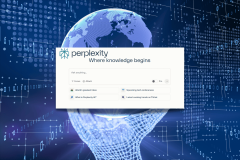Competition among ecommerce businesses continues to grow even as the worldwide economy enters a recessionary period. As a result, ecommerce companies are constantly looking for marketing insights to attract more customers and increase sales.
Alternative data can give ecommerce businesses of all sizes a competitive edge. To gain critical insights, Oxylabs surveyed 1000+ data professionals throughout the US and UK to learn more about how companies extract and use alternative data.
Topics covered by the survey included data acquisition methods, amounts companies plan to invest in over the next year, and what method impacts revenue the most. Read on to learn more about alternative data and how ecommerce companies use this information to expand operations and grow revenue.
What is Alternative Data?
Alternative data typically refers to information hedge fund managers and other finance professionals use to inform the investment process. This data is “alternative” because it is produced by unconventional sources outside a business or government entity.
Alternative data sources continue to grow as information from the public increasingly becomes digitized. These include mobile devices, satellites, public records, websites, online marketplaces, supply chain sensors, POS transactions, app store analytics, geolocation data, price tracking applications, and more.
Alternative data provides a competitive edge because it is less accessible and more timely than traditional sources. The use of this information has also moved outside the realm of investing and into different sectors to inform decisions made by governments, policymakers, and commercial businesses.
Today, alternative data is widely used by all types of businesses to create optimizations for existing processes or even create entirely new revenue streams. A common application of alternative data is dynamic pricing, wherein ecommerce companies constantly use real-time scraping to outperform competitors for the same products.
These applications, such as dynamic pricing, benefit not only the business, but also consumers at large. For example, alternative data makes models such as travel fare aggregation possible, which has attracted millions of consumers worldwide. Without timely and real-time data, such use cases would be impossible.
In large part, most of the alternative data is collected through web scraping, which is a process that employs automated data extraction from public sources. These solutions visit websites like any other regular user and download the entire content stored within. After that, the data is parsed and uploaded into data warehouses for analysis.
How Businesses Collect Alternative Data
As more public information is digitized, alternative data sources are growing. According to our survey:
- 88% of respondents in the US and 64% of participants in the UK use web scraping to collect alternative data
- 75% of both US and UK respondents use internal data collection software
- 70% of US and 60% of UK respondents use third-party traditional data aggregators
- 65% of US and 54% of UK respondents use third-party alternative data aggregators
While web scraping is the most popular solution, many companies still use third-party providers. We predict that such a preference is largely due to the intense startup and maintenance costs associated with web scraping. As data doesn’t instantly raise revenue, some companies might be hesitant to manage web scraping solutions in-house fully.
How Ecommerce Businesses Use External Data
Survey respondents use external data as follows:
- Market research: 73%
- Consumer demand forecasting: 66%
- Competition monitoring: 57%
- Product/Service development: 56%
- Dynamic pricing: 50%
- Customer service optimization: 40%
Market Research
Alternative data sources are increasingly diverse and span multiple categories, making them valuable for market research. Market research data sources include competitor websites and marketplaces where public information can be extracted to reveal upcoming trends, popular products, and emerging product categories.
Consumer Demand Forecasting
Alternative data sources that provide insights into consumer demand include Point-of-Sale (POS) data, consumer spending reports, and pricing data. Other data sources that help predict demand include scraping competitor websites and marketplaces for stock alerts that give analysts insights into top trending, highly-profitable products.
Competition Monitoring
Monitoring competitors is nothing new, and the digital age has taken this practice to an entirely new level. Ecommerce businesses looking for a business edge can search competitor websites to extract public data that reveals trending categories and profitable products.
Product/Service Development
Few ecommerce businesses can compete with large companies selling mass quantities at scale. As a result, many seek to provide differentiated products and services to a niche audience to stay competitive.
External data provides the specialized data ecommerce businesses can use to develop products and services that appeal to ever-evolving consumer demands.
Dynamic Pricing
Dynamic pricing strategies employ supply and demand factors to determine profit-maximizing prices.
Factors used in dynamic pricing strategies include competitor prices, predicted demand (through machine learning algorithms), actual demand, weather fluctuations, and special events like holidays. Consumers typically see this strategy in action on hotel and flight aggregator websites, where prices frequently change in accordance with market factors.
Customer Service Optimization
Small margins and large volumes determine profitability for many large-scale ecommerce businesses. While product selection across these websites can be quite similar, the customer service experience typically differentiates one retailer from another.
Ecommerce businesses that offer an upgraded customer experience will typically gain repeat business. Public external data scraped from anonymous comments/reviews on marketplaces provide specialized insights ecommerce businesses can use to refine their customer service policies and provide a distinctive after-sales experience that generates repeat buyers.
Revenue Generation from Web Scraping vs. Other Methods
Survey respondents say scraping external data generates more revenue than internal data collection (32% vs. 29%). A primary reason for the difference is likely due to the diverse range of insights obtained via web scraping vs. internal data collection. In addition, the internet is constantly growing, leading to more alternative data sources and undiscovered web scraping value.
Wrapping Up
As the economy slows down, ecommerce businesses are increasingly looking for an edge to stay competitive. Alternative data provides a distinct advantage for companies seeking to create precision marketing campaigns, forecast demand, monitor the competition, develop products, and implement dynamic pricing.
Web scraping has been a boon to many companies, even at the worst times. However, as the recessionary period passes, we expect that automated data collection will quickly rise in importance, leaving those that don’t use it in the past.
Featured Image Credit: Markus Spiske; Unsplash; Thank you!


















